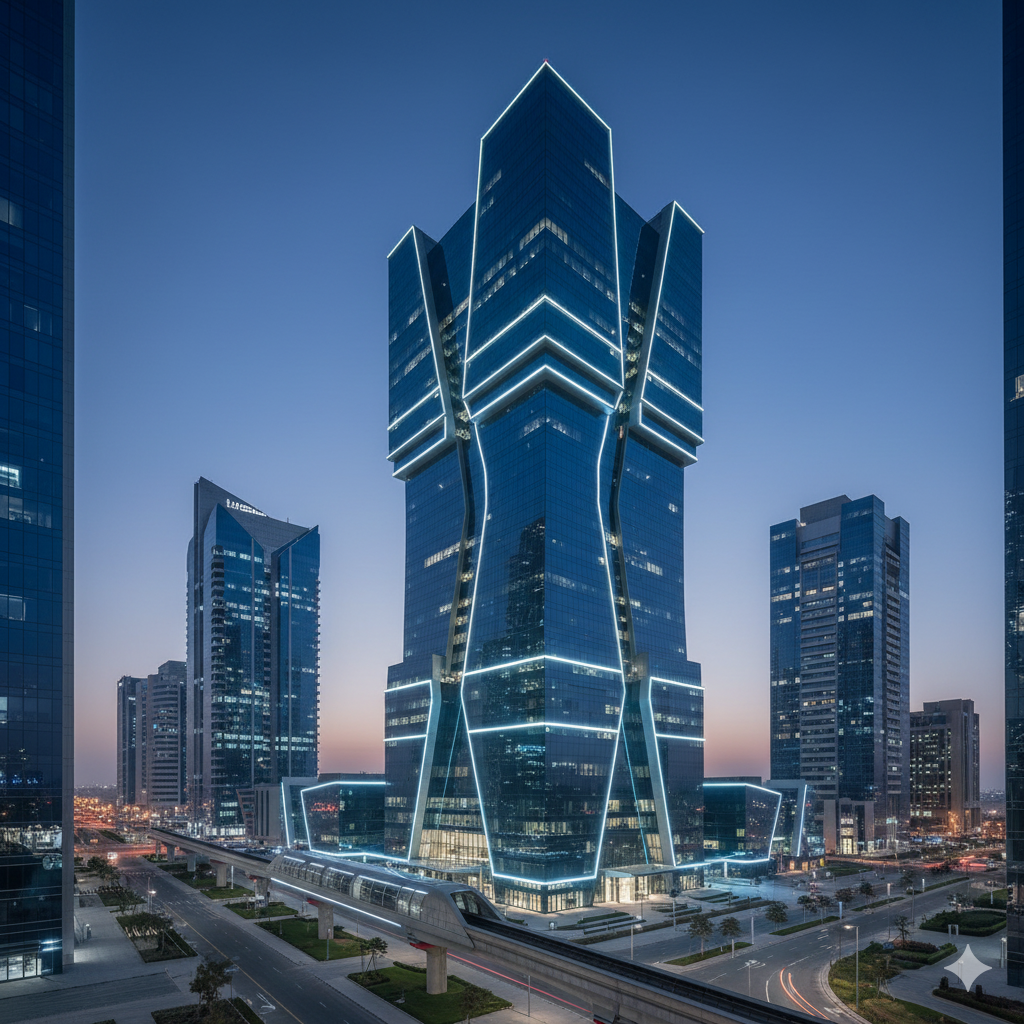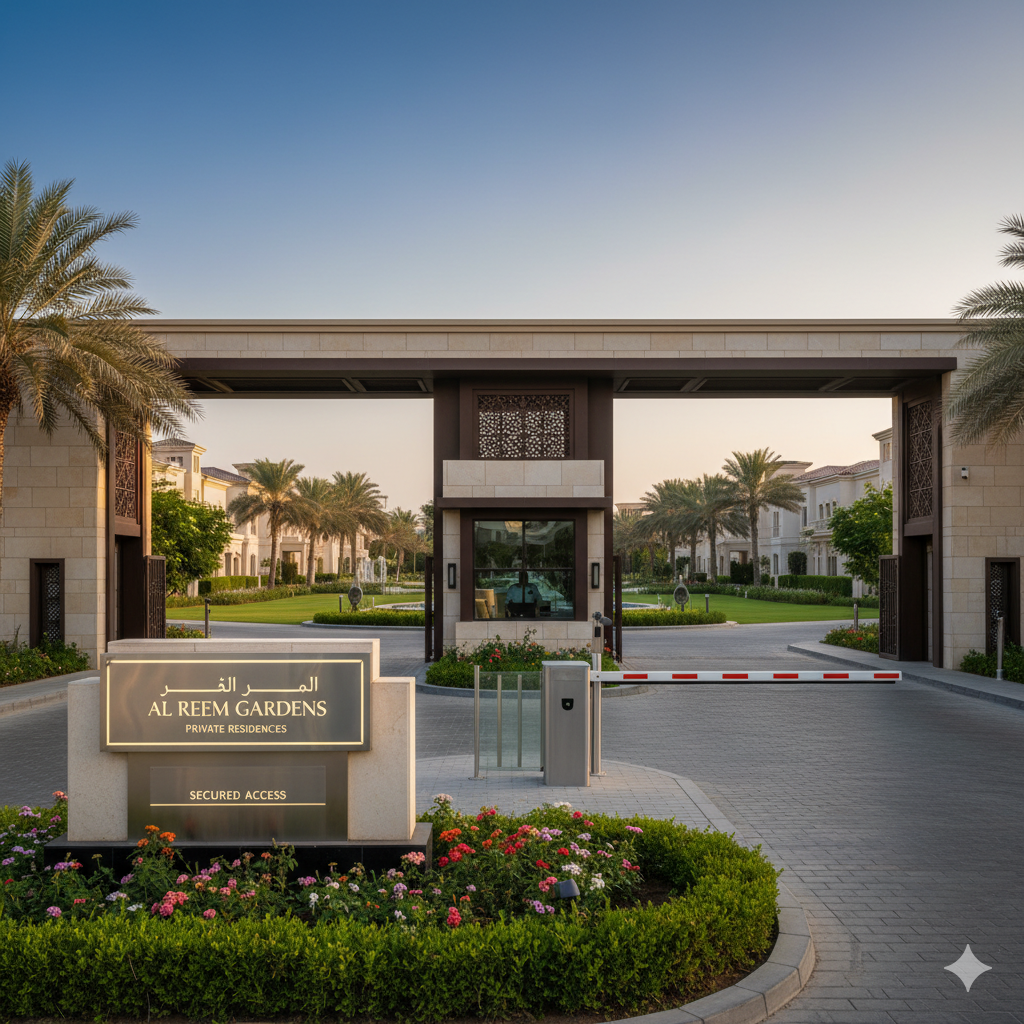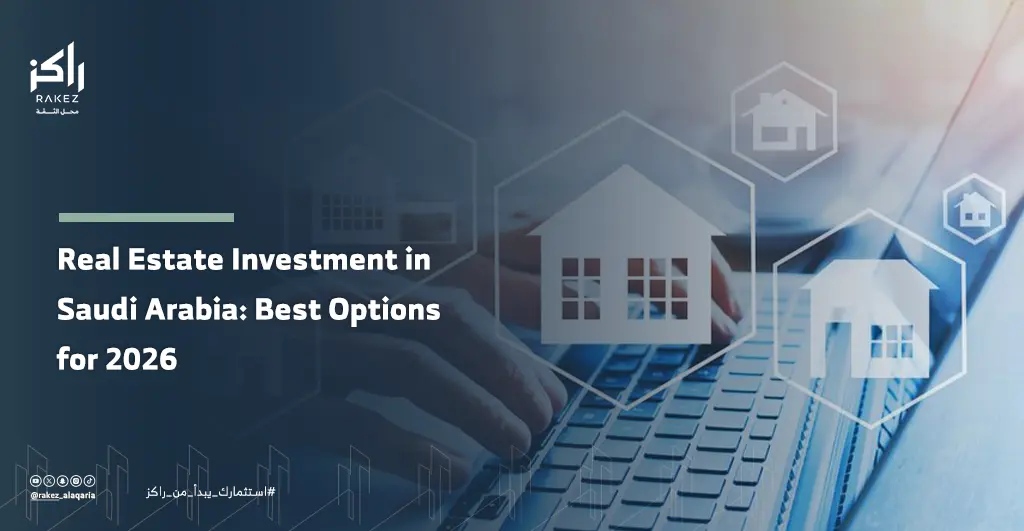Saudi Arabia’s property sector has transformed into one of the Middle East’s most dynamic investment landscapes, offering diverse opportunities across residential, commercial, and mixed-use segments. As Vision 2030 initiatives accelerate economic diversification and infrastructure development, real estate investment in Saudi Arabia presents compelling prospects for both domestic and international capital allocators. This comprehensive analysis explores the most promising investment avenues, market dynamics, and strategic considerations that will shape returns throughout 2026 and beyond.
Understanding the Current Investment Climate
The Kingdom’s property market operates within a unique context shaped by government policy, demographic trends, and economic transformation. Several fundamental factors create the foundation for investment decisions in 2026:
Vision 2030 Catalysts
The ambitious national transformation program continues driving massive infrastructure investments, new city developments, and regulatory reforms that fundamentally reshape property markets. Projects like NEOM, Qiddiya, and the Red Sea Development inject unprecedented capital while creating employment opportunities that fuel housing and commercial space demand.
These mega-initiatives don’t merely represent isolated developments—they trigger ripple effects throughout surrounding regions, elevating property values and rental demand in cities positioned along new transportation corridors and near project sites.

Regulatory Environment Evolution
The Real Estate General Authority (REGA) has implemented progressive regulations enhancing market transparency, protecting investor rights, and professionalizing industry standards. Foreign ownership restrictions have eased in designated zones, opening opportunities for international investors previously excluded from direct property ownership.
Mortgage market reforms have improved financing accessibility, expanding the pool of potential property buyers and supporting residential market liquidity. These structural improvements reduce investment risks while broadening market participation.
Demographic Momentum
Saudi Arabia’s youthful population—with median age below 32 years—is entering prime household formation years, creating sustained housing demand. Rising female workforce participation, evolving social norms, and urbanization patterns further intensify property market activity across multiple segments.
The combination of natural population growth and internal migration toward economic centers ensures baseline demand that supports property investments across residential categories.
Residential Property Investment Opportunities
Residential assets form the largest segment of real estate investment in Saudi Arabia, offering various entry points and risk-return profiles:
Mid-Range Family Housing
Properties targeting middle-income Saudi families represent perhaps the most stable investment category for 2026. Government homeownership initiatives, mortgage subsidies, and demographic demand create consistent tenant pools and buyer interest.
Investment Thesis: Focus on 2-3 bedroom apartments and townhouses in established neighborhoods with school access, transportation connectivity, and retail amenities. Target properties priced between SAR 600,000 and SAR 1.2 million.
Expected Returns: Rental yields typically range from 5-7% annually, with moderate capital appreciation of 3-5% as the market matures. Lower vacancy risks and stable tenant profiles reduce management intensity.
Prime Markets: Riyadh’s eastern districts (Al Malqa, Al Rimal), Jeddah’s central neighborhoods (Al Zahra, Al Rawdah), and Dammam’s family zones offer established markets with proven demand.
Luxury Residential Developments
High-end properties targeting affluent Saudi nationals and senior expatriate executives deliver different investment dynamics:
Investment Thesis: Premium villas, penthouses, and exclusive compounds in prestigious locations attract wealthy tenants willing to pay substantial premiums for quality, security, and status. Limited supply in top-tier locations supports pricing power.
Expected Returns: Rental yields average 4-6% but capital appreciation potential reaches 6-8% annually in prime locations. Higher tenant turnover and maintenance costs require active management.
Prime Markets: Riyadh’s Diplomatic Quarter vicinity, Jeddah’s northern coastal areas, and exclusive compounds near KAFD (King Abdullah Financial District) represent established luxury segments.
Affordable Housing Segment
Government focus on increasing homeownership among lower-income citizens creates opportunities in affordable housing development and investment:
Investment Thesis: Properties aligned with Sakani program parameters benefit from government subsidies supporting buyer demand. Volume-based approaches compensate for lower per-unit margins.
Expected Returns: Rental yields may reach 6-8% given strong demand, though capital appreciation typically lags premium segments at 2-4% annually. Government policy changes represent key risk factors.
Prime Markets: Peripheral areas of major cities where land costs permit affordable development, such as southern Riyadh districts and eastern Jeddah zones.
Student and Young Professional Housing
Universities, technical colleges, and expanding corporate employment create demand for compact, efficiently designed rental units:
Investment Thesis: Studio and one-bedroom apartments near educational institutions and business districts capture young renter demographics. Turnover rates are higher but tenant pools remain deep.
Expected Returns: Rental yields can reach 7-9% due to lower purchase prices and consistent demand, though management intensity increases with shorter tenancies and tenant demographics.
Prime Markets: Areas surrounding King Saud University in Riyadh, King Abdulaziz University in Jeddah, and near King Fahd University in Dhahran.

Commercial Real Estate Opportunities
Commercial property investments offer different risk-return characteristics and require specialized expertise:
Office Space Investments
Saudi Arabia’s economic diversification drives demand for quality office environments, particularly in financial services, technology, and professional services sectors:
Investment Thesis: Grade A office buildings in business districts command premium rents from multinational corporations and expanding Saudi enterprises. Long lease terms (3-5 years typically) provide income stability.
Expected Returns: Rental yields average 6-8% for prime office assets, with appreciation potential of 4-6% annually. Triple-net lease structures transfer many operating costs to tenants, improving net returns.
Prime Markets: KAFD in Riyadh represents the Kingdom’s premier office market. King Abdullah Financial Centre in Jeddah and Al Khobar’s business districts offer secondary opportunities.
Considerations: Office investments require substantial capital, specialized management, and understanding of corporate real estate cycles. Economic downturns impact vacancy rates more severely than residential segments.
Retail Properties
Consumer spending growth and retail sector modernization create opportunities in shopping centers, street retail, and specialized retail formats:
Investment Thesis: Quality retail in high-traffic locations benefits from Saudi Arabia’s young, consumption-oriented population. Mixed-use developments integrating retail with residential or entertainment elements show particular strength.
Expected Returns: Retail rental yields vary widely from 5-10% depending on location quality and tenant mix. Anchor tenants provide stability while specialty retail spaces command higher rents.
Prime Markets: Major shopping corridors in Riyadh (Takhassusi Street, Olaya District), Jeddah (Tahlia Street, Red Sea Mall vicinity), and emerging retail nodes in new developments.
Considerations: E-commerce growth affects retail property dynamics. Focus on experiential retail, food and beverage tenants, and locations with entertainment integration rather than pure goods-based retail.
Hospitality Assets
Tourism sector expansion under Vision 2030, religious pilgrimage growth, and business travel increases create hospitality investment opportunities:
Investment Thesis: Hotel properties near religious sites, business centers, and emerging tourism destinations capture diverse demand sources. Management-intensive but potentially high-yielding.
Expected Returns: Well-located hotels can generate 8-12% returns, though operational complexity and economic sensitivity create higher risk profiles. Management contracts with established operators reduce operational burdens.
Prime Markets: Mecca and Medina for religious tourism, Riyadh for business travel, Red Sea Project area for leisure tourism, and AlUla for cultural tourism.
Industrial and Logistics Facilities
E-commerce growth, manufacturing development, and supply chain investments drive demand for warehousing and logistics properties:
Investment Thesis: Modern warehouses with efficient layouts, loading capabilities, and strategic locations serve growing logistics sector needs. Long-term leases to established operators provide stability.
Expected Returns: Industrial properties typically yield 7-10% with moderate appreciation potential of 3-5% annually. Lower management intensity compared to retail or hospitality assets.
Prime Markets: Riyadh’s industrial zones, Jeddah’s port vicinity, and Dammam’s logistics corridors near King Fahd Industrial Port.
Emerging Investment Segments
Several property categories represent newer opportunities with higher risk-reward profiles:
Co-Living Developments
Changing lifestyles, later marriage ages, and urbanization create demand for professionally managed shared living spaces targeting young professionals:
Investment Thesis: Purpose-built co-living facilities offering private bedrooms with shared amenities capture renters seeking affordability and community. Higher per-square-meter returns compensate for specialized development requirements.
Expected Returns: Optimized co-living can generate 8-10% yields, though unproven Saudi market acceptance creates uncertainty. Management expertise proves critical to success.
Implementation: Start with pilot projects in Riyadh or Jeddah targeting expatriate professionals and young Saudis before scaling operations.
Healthcare Properties
Population growth, aging demographics, and healthcare sector expansion drive demand for medical facilities:
Investment Thesis: Medical office buildings, specialty clinics, and diagnostic centers leased to healthcare operators provide stable income from growing sector. Specialized buildings create barriers to competition.
Expected Returns: Healthcare properties typically yield 7-9% with long lease terms (5-10 years common) providing income predictability. Appreciation follows healthcare demand growth.
Prime Markets: Locations near major hospitals, in underserved neighborhoods, and within large residential communities.
Data Centers and Technology Infrastructure
Digital transformation initiatives require physical infrastructure supporting technology operations:
Investment Thesis: Purpose-built data centers, technology parks, and telecommunications infrastructure properties serve expanding digital economy needs. Highly specialized but potentially lucrative.
Expected Returns: Returns vary widely from 6-12% depending on tenant quality, location, and infrastructure specifications. Capital intensity and technical requirements create entry barriers.
Considerations: Requires deep understanding of technology sector needs, power infrastructure, and cooling requirements. Partner with technology operators or specialized developers.
Geographic Investment Strategies
Location selection significantly impacts investment performance. Consider these geographic approaches:
Core Market Focus: Riyadh, Jeddah, Dammam
The Kingdom’s three largest cities offer:
- Deep, liquid markets with established valuations
- Diverse tenant and buyer pools reducing concentration risk
- Proven infrastructure and amenities
- Lower execution risk but potentially moderate appreciation rates
Strategy: Core holdings providing stable income with lower risk profiles. Suitable for conservative investors or portfolio foundations.
Secondary City Opportunities: Medina, Abha, Tabuk
Mid-sized cities present different dynamics:
- Lower entry prices with higher yield potential
- Growing but smaller markets with less liquidity
- Infrastructure improvements enhancing attractiveness
- Higher appreciation potential but increased execution risk
Strategy: Tactical allocations providing diversification and higher potential returns for investors accepting additional risk.
Mega-Project Adjacent Investments
Properties near NEOM, Qiddiya, Red Sea Project, and other transformational developments:
- Speculative appreciation potential as projects mature
- Current limited infrastructure and amenities
- Long investment horizons required (5-10+ years)
- High risk-reward profiles dependent on project execution
Strategy: Opportunistic allocations for risk-tolerant investors with patient capital and strong conviction in mega-project success.

Investment Structures and Vehicles
Multiple approaches enable real estate investment in Saudi Arabia:
Direct Property Ownership
Purchasing properties individually provides:
- Complete control over asset selection and management
- Direct exposure to appreciation and rental income
- Higher capital requirements and management responsibilities
- Suitable for experienced investors or those with local expertise
Real Estate Investment Trusts (REITs)
Saudi REITs offer:
- Liquid, exchange-traded exposure to property portfolios
- Professional management and diversification
- Lower minimum investments (can start with single shares)
- Dividend yields typically 4-8% annually
- Reduced control but simplified execution
Several Saudi REITs focus on different sectors—retail, residential, healthcare, and mixed portfolios. Research individual REIT strategies, management quality, and portfolio compositions before investing.
Property Funds and Private Placements
Pooled investment vehicles provide:
- Access to larger deals requiring substantial capital
- Professional management and sector expertise
- Diversification across multiple properties or developments
- Lock-up periods reducing liquidity
- Minimum investment thresholds (typically SAR 500,000+)
Real Estate Development Partnerships
Participating in development projects offers:
- Higher return potential from development profits
- Active involvement in project direction
- Significant expertise requirements
- Higher risk profiles with execution uncertainties
- Longer capital commitments until project completion
Financial Analysis and Due Diligence
Rigorous evaluation separates successful investments from underperformers:
Key Metrics for Property Assessment
Gross Rental Yield: Annual rental income divided by property purchase price. Useful for initial comparisons but ignores costs.
Net Rental Yield: Rental income minus operating expenses (maintenance, management fees, taxes) divided by total investment including acquisition costs. More accurate performance measure.
Cash-on-Cash Return: Annual pre-tax cash flow divided by total cash invested. Accounts for financing leverage effects.
Internal Rate of Return (IRR): Comprehensive return measure incorporating rental income, appreciation, and investment timing. Target IRRs typically range from 10-15% for Saudi property investments depending on risk profile.
Capitalization Rate: Net operating income divided by property value. Market cap rates indicate pricing relative to income generation—lower cap rates suggest higher valuations.
Comprehensive Due Diligence Process
Before committing capital, conduct thorough investigations:
Legal Verification: Confirm clear title, zoning compliance, building permits, and absence of encumbrances. Engage qualified lawyers for document review.
Physical Inspection: Assess structural condition, systems functionality, deferred maintenance, and compliance with building codes. Professional inspections identify costly issues.
Financial Analysis: Review historical income and expenses, tenant payment records, lease terms, and occupancy rates. Verify seller-provided information independently.
Market Research: Analyze comparable property values, rental rates, vacancy trends, and neighborhood dynamics. Understand supply-demand balances affecting future performance.
Tenant Quality: For income-producing properties, evaluate tenant creditworthiness, lease terms, renewal probabilities, and industry outlook for tenant businesses.
Risk Management Strategies
Real estate investment carries various risks requiring mitigation approaches:
Market Risk Management
Diversify across property types, locations, and price points to reduce concentration risk. Combine core stable assets with opportunistic higher-risk investments based on your risk tolerance.
Liquidity Risk Mitigation
Property investments are inherently illiquid. Maintain adequate reserves for personal needs, avoid over-concentration in real estate, and consider liquid REIT exposure alongside direct property holdings.
Tenant Risk Reduction
Screen tenants carefully, maintain appropriate insurance coverage, and diversify tenant profiles. For commercial properties, prefer creditworthy tenants with established businesses.
Regulatory Risk Awareness
Monitor policy changes affecting property ownership, rental regulations, and taxation. Engage professionals maintaining current knowledge of regulatory environment.
Currency Risk Considerations
For international investors, Saudi Riyal’s peg to US Dollar provides relative stability but monitor any discussions of peg adjustments. Consider hedging strategies for large exposures if significant currency concerns emerge.
Tax and Legal Considerations
Understanding fiscal obligations optimizes after-tax returns:
Property Taxation
Saudi Arabia imposes minimal property taxes compared to many markets. White Land Tax affects undeveloped urban land but residential property owners face limited ongoing tax burdens.
Capital Gains Treatment
Real estate sale profits may be subject to taxation depending on specific circumstances and holding periods. Consult tax advisors regarding current treatment of capital gains from property sales.
Zakat Obligations
Saudi nationals must pay Zakat on assets including investment properties. Calculate obligations accurately and maintain proper documentation.
Foreign Ownership Structures
International investors should structure ownership through appropriate legal entities, considering tax treaties between Saudi Arabia and their home jurisdictions. Legal and tax advice proves essential for cross-border investments.
Technology and Property Investment
Digital tools increasingly influence investment processes:
Property Technology (PropTech) Platforms
Online marketplaces aggregate listings, provide market data, and facilitate property searches. Platforms like Bayut, Property Finder, and local portals increase market transparency.
Data Analytics Tools
Sophisticated investors employ data analysis identifying undervalued properties, predicting appreciation patterns, and optimizing portfolio allocations. Geographic information systems (GIS) analyze location factors affecting property values.
Property Management Technology
Digital platforms streamline tenant communications, maintenance requests, rent collection, and financial reporting. These tools reduce management friction, particularly for investors with multiple properties.
Building Your Investment Portfolio
Structured approaches lead to better outcomes:
Define Investment Objectives
Clarify goals before selecting properties:
- Income generation vs. capital appreciation priority
- Risk tolerance and acceptable volatility
- Investment horizon and liquidity needs
- Total capital available for real estate allocation
- Time available for active management
Start with Core Holdings
Begin with stable, income-producing properties in established markets. These provide foundation returns and learning experiences before attempting more complex or speculative investments.
Gradually Add Opportunistic Positions
As experience and capital grow, selectively add higher-risk, higher-return opportunities that complement core holdings. Limit opportunistic investments to 20-30% of total real estate portfolio value.
Regular Portfolio Review
Assess holdings annually, evaluating performance against expectations and changing market conditions. Rebalance by selling underperformers and reallocating to better opportunities.
Build Professional Network
Cultivate relationships with qualified real estate agents, property managers, lawyers, contractors, and fellow investors. This network provides deal flow, expertise, and support throughout investment lifecycle.
Future Outlook for 2026 and Beyond
Several trends will shape real estate investment performance:
Continued Infrastructure Investment
Government commitment to Vision 2030 ensures sustained infrastructure development supporting property values and rental demand across the Kingdom.
Demographic Tailwinds
Population growth and household formation will continue driving baseline housing demand through 2026 and beyond, supporting residential investment performance.
Technology Sector Expansion
Digital economy growth creates opportunities in technology infrastructure properties, co-working spaces, and housing serving technology sector employees.
Sustainability Focus
Green building standards, energy efficiency, and environmental considerations increasingly influence property values. Forward-thinking investors incorporate sustainability features capturing premium-paying tenants.
Market Maturation
As regulations strengthen and market practices professionalize, Saudi Arabia’s property sector will increasingly resemble developed markets—reducing extreme volatility while potentially moderating outsized returns.
Conclusion
Real estate investment in Saudi Arabia offers diverse opportunities across residential, commercial, and emerging property segments. The combination of demographic momentum, economic transformation, and government support creates favorable conditions for capital appreciation and income generation throughout 2026.
Successful investors will conduct thorough due diligence, diversify across property types and locations, maintain adequate liquidity buffers, and stay informed about regulatory developments. Whether pursuing stable mid-range residential properties, speculative positions near mega-projects, or specialized commercial assets, strategic approaches matched to individual risk tolerances and investment objectives will maximize returns.
The Kingdom’s property market has matured substantially, offering both accessibility for new investors and sophistication for experienced capital allocators. With careful selection, proper financial structuring, and patient capital, real estate investment in Saudi Arabia can deliver attractive risk-adjusted returns while participating in one of the world’s most ambitious economic transformation journeys.


